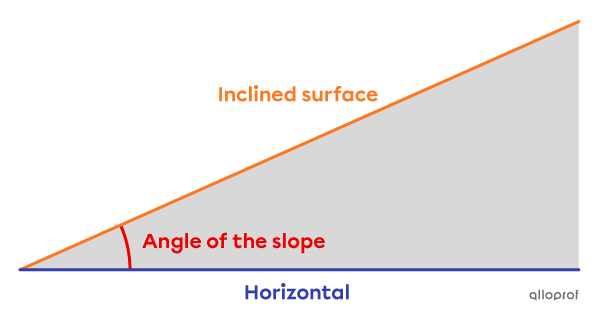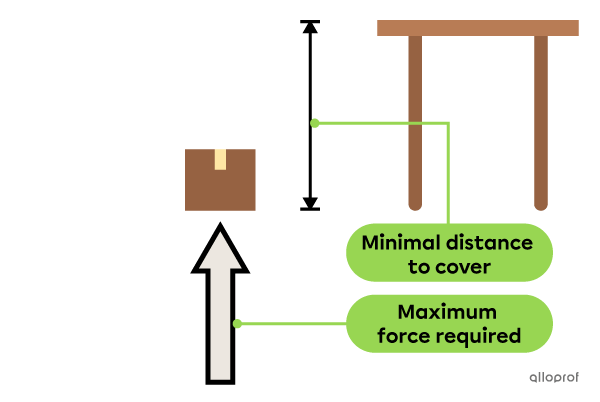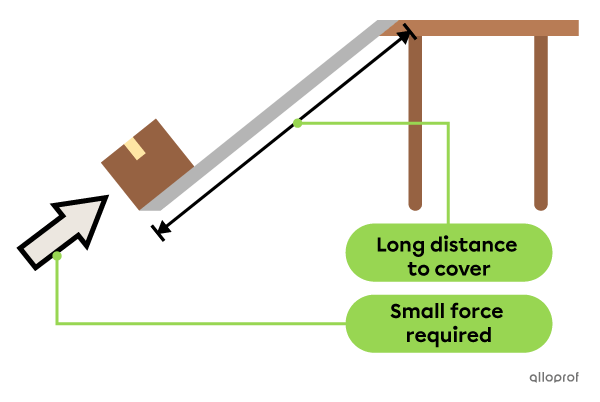The inclined plane is a simple machine that consists of a flat surface at an angle relative to the horizontal. An inclined plane reduces the force required to lift an object.

The slope of an inclined plane determines the force required to move an object and the distance it needs to be moved.
The smaller the slope of an inclined plane (less steep), the more the weight of the object is supported by the inclined plane and the smaller the force required. However, in order for the slope of an inclined plane to be smaller, it must be longer. So, although the force required is smaller, it must be applied over a longer distance.
The following three images show a situation where an object has to be lifted onto a table.
In the following image, there is no inclined plane to help lift the object. The entire weight of the object has to be lifted onto the table.
In this case, the object has to travel the shortest possible distance, but the force required to lift it is very large.

In the following image, the slope of the inclined plane is high. The word steep can be used to describe it. A small part of the object's weight is supported by the inclined plane.
The higher the slope of the inclined plane:
-
the shorter the distance the object has to travel;
-
the greater the force required to lift the object.

In the following image, the slope of the inclined plane is low. It can be described as gentle, shallow or gradual. A large part of the object's weight is supported by the inclined plane.
The lower the slope of the inclined plane:
-
the longer the distance the object has to travel;
-
the smaller the force required to lift the object.

When backcountry skiing, it's easier to climb by winding up the mountain rather than going in a straight line. This way, the path is longer but less steep. The force required to climb is smaller.

Source: Howard Welch, Shutterstock.com
A ramp is used to make loading a truck easier. The force required to lift objects onto the truck is smaller.
